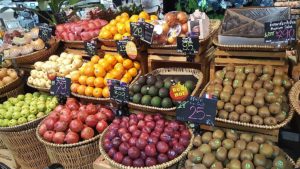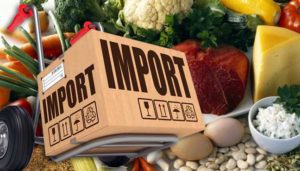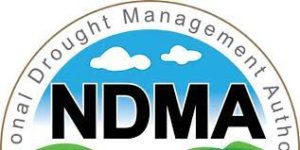In the six (6) months to June 2021 the Food Import Bill for the East African nation of Kenya reached a record high which, led to more pressure being placed on household budgets that were already severely affected by the still ongoing Coronavirus pandemic. This is according to official data.

The import data which was tracked by the Kenya Revenue Authority (KRA) revealed that traders in Kenya ordered beverages and food (which includes the breeding of animals as well as the slaughtering) that were valued at 103.34 billion Kenyan Shillings between the period of January 2021 to June 2021.
According to the data compiled by the Kenya National Bureau of Statistics (KNBS) the increase, is basically 13.57 percent or 12.35 billion Kenyan Shillings more than the 91 billion Kenyan Shillings that was utilized for food imports into Kenya during a similar period in 2020.
Kenya’s spending on food imports in the half year period for 2021 is significantly higher than the 96.41 billion Kenyan Shillings that was spent in the first half of 2017 when a severe drought situation negatively affected the production of fodder and crops. The situation led to the National Treasury implementing subsidies and a waiver on import duties in order to ensure the smooth purchasing of vital food items which include rice, milk powder and maize from other countries.
According to analysts the latest rally with regards to the food import bill, is as a result of strengthened shipments of items like cereals and grain in order to cover for the reduction in production on the local front which occurred as a result of late planting in the March, April and May main crop season combined, with a weakened local currency; the Kenyan Shilling against the United States Dollar causing importers to pay more.

Data revealed that in 2021 there has been an increase in the importation of the major foods consumed in Kenya like Wheat which has not been milled, rice, maize, and wheat flour. The resulted in a significantly larger import bill.
Maize imported from Tanzania and Uganda in the first five (5) months of this year (2021) experienced an increase of almost two times to hit 1.38 million 90 Kilogram bags. This is no small increase when compared to the 495,813 90 Kilogram bags that was the case in 2020 based on information from the Ministry of Agriculture.
The importation of Wheat in the period of January 2021 to May 2021 went through an increase of 12.30 percent to reach 9.1 million 90 Kilogram bags. In 2020 8.1 million 90 kilogram bags of Wheat were imported into Kenya.
The rice volumes which were imported into Kenya rose by 92.71 percent to 2.4 million 90 kilogram bags from almost 1.25 million 90 kilogram bags the year before (2020).
Data by the Ministry of Agriculture revealed that a similar increase occurred in the importation of Beans which climbed to 287,031 bags during the period under review from 215,014 bags indicating a growth of 33.49 percent.

A number of areas in Kenya have been going through less than average rainfall with other areas even experiencing famine for a significant part of the year.
According to Business Daily Africa the Kenyan Authorities have issued a warning stating that the food security in the country could get worse over the next couple of months, in the North Eastern region of the country. That is if the incoming brief rainy season from October 2021 records a performance that is below average.
The Resident Coordinator of the United Nations (UN) in Kenya; Dr. Stephen Jackson made it known during a meeting to discuss the drought situation in Kenya that, “We are already transitioning from the alert to alarm phase, and should the upcoming October rains also fail, then Kenya will be facing a very grave emergency indeed.”
According to estimates by the United Nations (UN), the total number of individuals majorly in Northern Kenya who are dealing with food insecurity, grew to 2.1 million in August of 2021, up from 1.4 million that was the case in February in 2021.
The Eastern African nation of Kenya estimates that it will need 9.4 billion Kenyan Shillings between August 2021 and November 2021 to be able to properly combat the drought in counties which have been affected the most. The sum would be broken into 5.8 billion Kenyan Shillings which will be channeled towards food, and 3.6 billion Kenyan Shillings which will be channeled towards needs that are not food related. An example of such, is sanitation.

The Devolution Cabinet Secretary; Eugene Wamalwa stated that, “If we can put in place remedial measures now, we can cushion those vulnerable families that are facing this drought because experts are telling us unless we do that, the situation is likely to worsen.”
Eugene Wamalwa added that, “From September to December we are likely to see more counties going into the red.”
The National Drought Management Authority (NDMA) has issued a severe draught warning for Turkana county, Marsabit county, Garissa county, Wajir county, Lamu county, Tana River county, Samburu county, Mandera county, Isiolo county, Laikipia Kitui county, and Kilifi county, stating dried up water points, and depressed harvests.

The National Drought Management Authority (NDMA) added that 11 other counties which are Kwale county, Makueni county, Kajiado county, Baringo county, Narok county, Taita Taveta county, Tharaka Nithi county, Embu county, West Pokot county, Meru county, and Nyeri(Kieni) county.
The effect of the increased cost in the importation of food imports is already being experienced in households across Kenya as inflation continues to rise.
For July of 2021 the food inflation was at 8.8 percent making it the nation’s highest since May 2020 when the effects of the Coronavirus pandemic travel restrictions and shutdowns were at their greatest. The food inflation was further caused by vegetables and cooking oil. This is according to an analysis by the Central Bank of Kenya.
How informative was this article? Are there any other news topics, categories, or How To topics, that you would like us to write on? Feel free to reach out to Mpesa Pay in the comment section.


